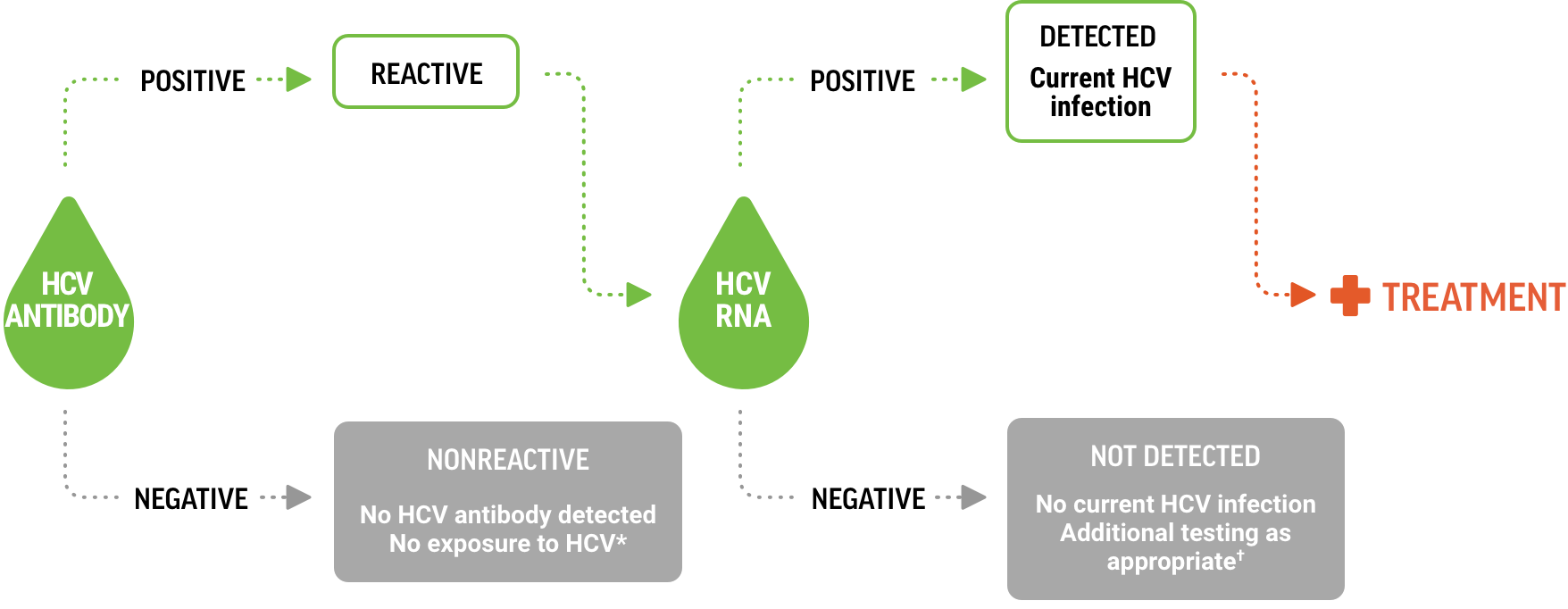Injection drug use (current or ever, including those who injected only once)
Patients from ages 20 to 39
Caucasian females and males
Those living in rural areas
Injection drug users

Most people with chronic HCV infection have nonspecific symptoms,
such as chronic fatigue and depression2

Patients from ages 20 to 39
Caucasian females and males
Those living in rural areas
Injection drug users
Injection drug use accounts for approximately
70%
OF NEW HEPATITIS C INFECTIONS4
One-time, routine, opt-out HCV testing is recommended for all individuals aged 18 years and older.
One-time HCV testing should be performed for all persons less than 18 years old with behaviors, exposures, or conditions or circumstances associated with an increased risk of HCV infection (see below).
Periodic repeat HCV testing should be offered to all persons with behaviors, exposures, or conditions or circumstances associated with an increased risk of HCV exposure (see below).
Annual HCV testing is recommended for all persons who inject drugs and for HIV-infected men who have unprotected sex with men.
Injection drug use (current or ever, including those who injected only once)
Intranasal illicit drug use
Men who have sex with men
Persons on long-term hemodialysis (ever)
Healthcare, emergency medical, and public safety workers after needlestick, sharps, or mucosal exposure to HCV-infected blood
Persons with percutaneous/parenteral exposures in an unregulated setting
Children born to HCV-infected women
Prior recipients of a transfusion or organ transplant, including persons who:
|
|
Persons who were ever incarcerated
HIV infection
Unexplained chronic liver disease, including elevated alanine aminotransferase (ALT) levels
Sexually active persons about to start pre-exposure prophylaxis (PrEP) for HIV
Solid organ donors (living and deceased) and solid organ transplant recipients
Refer to AASLD/IDSA guidelines for further details.
Recommended testing sequence for identifying current HCV infection

*For persons who might have been exposed to HCV within the past 6 months, testing for HCV RNA or follow-up testing for HCV antibody is recommended. For persons who are immunocompromised, testing for HCV RNA can be considered.
†To differentiate past, resolved HCV infection from biologic false positivity for HCV antibody, testing with another HCV antibody assay can be considered. Repeat HCV RNA testing if the person tested is suspected to have had HCV exposure within the past 6 months or has clinical evidence of HCV disease, or if there is concern regarding the handling or storage of the test specimen.
MAVYRET is indicated for the treatment of adult and pediatric patients 3 years and older with acute or chronic hepatitis C virus (HCV) genotype 1, 2, 3, 4, 5, or 6 infection without cirrhosis or with compensated cirrhosis (Child-Pugh A). MAVYRET is indicated for the treatment of adult and pediatric patients 3 years and older with HCV genotype 1 infection, who previously have been treated with a regimen containing an HCV NS5A inhibitor or an NS3/4A protease inhibitor (PI), but not both.
WARNING: RISK OF HEPATITIS B VIRUS REACTIVATION IN PATIENTS COINFECTED WITH HCV AND HBV: Test all patients for evidence of current or prior hepatitis B virus (HBV) infection before initiating treatment with MAVYRET. HBV reactivation has been reported in HCV/HBV coinfected patients who were undergoing or had completed treatment with HCV direct-acting antivirals and were not receiving HBV antiviral therapy. Some cases have resulted in fulminant hepatitis, hepatic failure, and death. Monitor HCV/HBV coinfected patients for hepatitis flare or HBV reactivation during HCV treatment and posttreatment follow-up. Initiate appropriate patient management for HBV infection as clinically indicated.
Risk of Hepatic Decompensation/Failure in Patients with Evidence of Advanced Liver Disease
Risk of Reduced Therapeutic Effect Due to Concomitant Use of MAVYRET with Certain Drugs
Most common adverse reactions observed with MAVYRET:
MAVYRET oral pellets are dispensed in unit-dose packets. Each packet contains 50 mg glecaprevir/20 mg pibrentasvir.
US-MAVY-250347